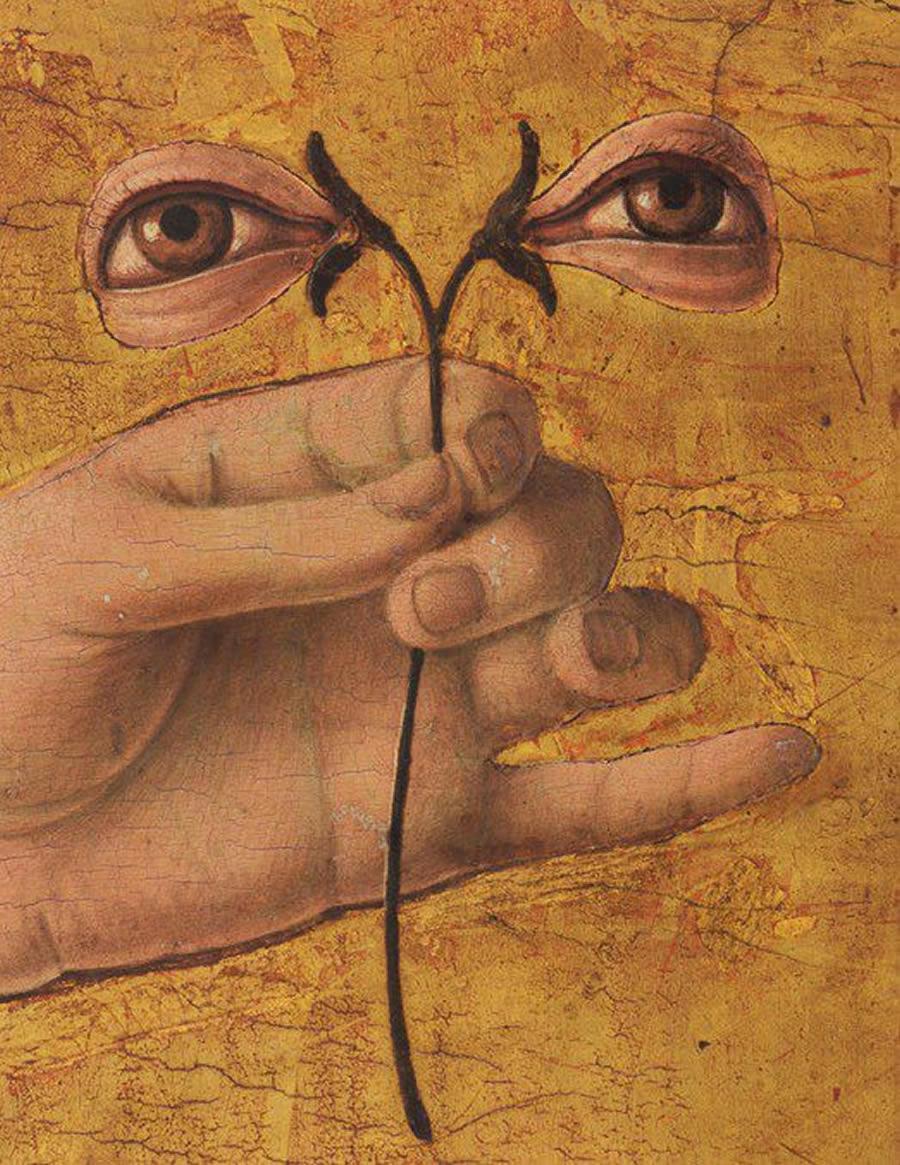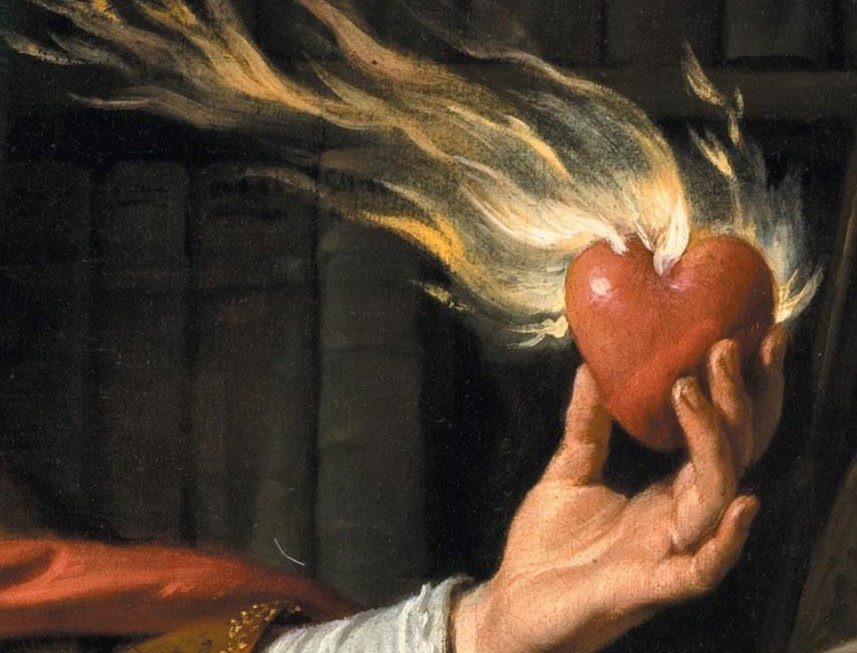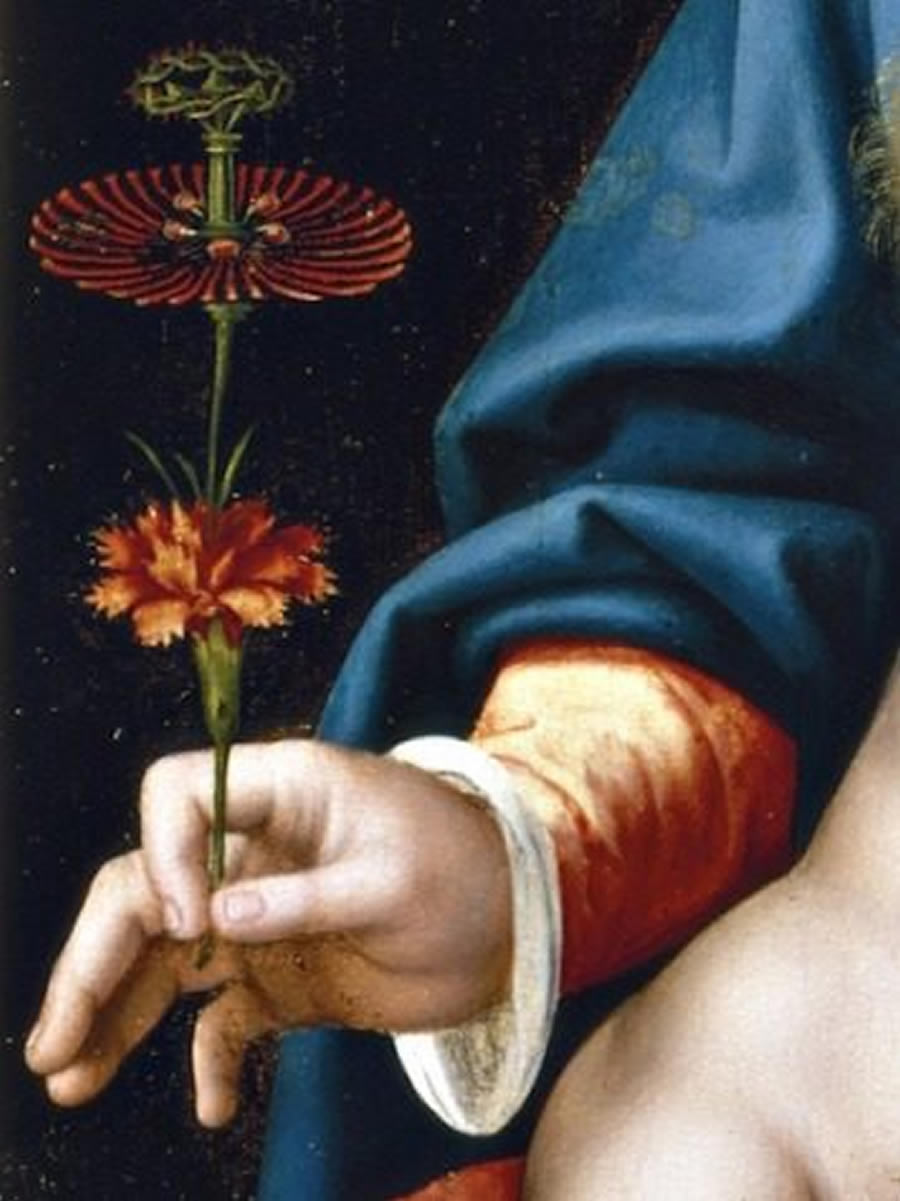PUPILS
When we look at each other our eyes blossom
Curated by Rita Selvaggio

Francesco del Cossa (Ferrarese, c.1436 -1477/1478), Santa Lucia,1473-1474, tempera su tavola, 77.2×56 cm, Washington, National Gallery of Art. Samuel H. Kress Collection. Particolare.
ARTISTS: Aviva Silverman, Emily Sundblad, Isabella Costabile, Jenna Gribbon, Kaari Upson, Karen Kilimnik, Nathalie Djurberg e Hans Berg, Paloma Varga Weisz, Rachel Rose, Trisha Donnelly, Vera Portatadino
PUPILS. When we look at each other our eyes blossom
The pupil is the opening at the centre of the iris through which rays of light pass to reach the crystalline lens. The word was originally a Latinism, a diminutive of pupa, i.e. doll, girl. When we look someone in the eye, the shiny black of the pupil reflects our own image, a tiny human figure. Which means that before the invention of mirrors, it was only possible to see ourselves in another’s gaze. This way of referring to what allows us to see is also to be found in ancient Greek. In fact the word kore is used to indicate both a girl and the pupil, setting the seal on a profound connection between these two concepts.
Kore, or the ‘unspeakable girl’ as Giorgio Agamben has defined this figure, a Greek myth that tells a story of the dark underworld but at the same time of radiant sunshine and that, given its intimate connection with the Eleusinian mysteries, was linked to silence (the term ‘mystery’ comes from a root that means ‘to close the mouth, to keep silent’).
The subtitle quotes the beginning of a poem by Else Lasker-Schüler (1869-1945), in whose work the eyes are presented as the centre of consciousness and a meeting place of the soul and the visible world.
The exhibition explores some of the themes covered in Masaccio and Angelico: Dialogue on Truth in Painting, which is currently being staged at the Museo delle Terre Nuove and the Museo della Basilica. A dialogue that, in this case, is nourished by gazes, those of Mary and the Angel in the ‘Annunciations’, and of the Madonna and Child, looking and being looked at, the pulsations of the gaze itself or the entry into the gaze of the other and ‘abandoning yourself to the angel’s call’. In a correspondence of aesthetic and conceptual synergies, and making reference to the notions discussed above (gaze | pupil | kore | girl), Casa Masaccio orchestrates a dialogue on the gaze in which the concepts of the “Feminine” pervade the exhibition, involving women artists of different generations inclined to representation of the body and its metaphors and metamorphosis, who on this specific occasion take on local history and art, selecting or producing works and interventions specifically for the occasion.
ON GOING ON LINE:
FEMALE MYSTICS – SACRED HEARTS: Drunk with desire, lacking all
FLORILEGIUM
curated by Rita Selvaggio and Sofia Silva
Iconographic research and appendices: Chiara Di Maria, Valentina Rubino
27 October 2022 – 26 January 2023
These are two digital anthologies that, in the format of a weekly newsletter, intertwine with and accompany the exhibition for its entire duration.
FEMALE MYSTICS – SACRED HEARTS: Drunk with desire, lacking all
Literary fragments, documents, historical analyses of mediaeval mysticism and more, in relation to the cultural and visual economy of the marginal. Alongside interventions by artists, thinkers and scholars are presented testimonies of female saints and nuns, from Angela da Foligno to Santa Veronica Giuliani to Hildegard of Bingen – pharmacist of God – ; as well as contributions from intellectuals, like René Guénon’s examination of the iconography of the radiant and flaming heart. And then citations of some of the most moving passages by great women writers drawn to mysticism, such as Simone Weil and Cristina Campo. The narrations of the exhibition PUPILS run in parallel to those of the online programmes, so that a whole vocabulary is made available to the public with which to probe the relationship between the sacred, the feminine, the desire that finds expression in transcendence and the visionary nature of a spirituality that surpasses the individual.

Philippe de Champagne (Bruxelles,1602 – Parigi,1674), Sant’Agostino cardioforo, 1645-1650, olio su tela, 78.74×62.23 cm, Los Angeles, County Museum of Art. Particolare.
“Sagittaveras tu cor meum charitate tua”
Augustine, Confessiones, 9,2,3
‘You pierced my heart with the arrow of your love,’ wrote Augustine, addressing himself to God. The saint bearing a ‘flaming’ heart or one pierced by an arrow, as a symbol of deep love of God, was a frequent image in the iconography of 17th-century painting. The best known of the images of this kind is that of St Augustine of Hippo (354-430). The one that presents the series FEMALE MYSTICS – SACRED HEARTS is in fact a detail of a picture of Augustine ‘bearing his heart’ by the French painter Philippe de Champaigne (1645-50). The truth of Revelation kindles flames around the beating heart of the saint, passing through his gaze and strengthening his study of the Holy Scriptures. St Augustine’s eyes peer directly into that ‘luminous darkness’, as John of the Cross described it; the formless light passes through his pupils and mind, leaving him with his lips barely parted in awe.
FEMALE MYSTICS – SACRED HEARTS sets out to reconstruct the moment of ecstasy through the words of many illustrious minds who have expressed themselves on the subject in different eras, through their domestic rites as well as their sacrificial impulses. The French nun and mystic St Margaret, who was renowned in her lifetime for her particular devotion to the Sacred Heart of Jesus, becoming the inspiration for the feast, spoke almost as if she had it before her eyes: ‘The Divine Heart was shown to me as on a throne of flames, more dazzling than the sun and transparent as crystal.’
In FLORILEGIUM, the discourse on mysticism encounters the symbolism of flowers and the significance they hold in religious, artistic or healing practices.

Joos van Cleve (Kleve,1485 – Anversa,1541), Madonna con Bambino, 1530-1535, olio su tavola, 61.1×46.4 cm, Cincinnati Institute of Fine Art. Particolare.
Florilegium, a mediaeval Latin word that is a combination of flos, floris ‘flower’ and legere ‘to gather’ – i.e. ‘collection of flowers’, came into widespread use as a result of the literary activity of Father Giovanni Pozzi, priest, Capuchin friar and author of a florilegium. ‘A garden enclosed is my sister, my spouse’ (4:12) declares the Song of Songs in a passage that has always been associated with the Virgin Mary and her purity. In the Hortus Conclusus the flowers were chosen chiefly for their symbolic character linked to Mary, mother and begetter of Jesus and bestower of grace and all the virtues. The lily, a white flower, stands for purity, innocence and virginity; the rose without thorns represents the Shulamite, untouched by original sin; violets, emblems of modesty and humility, stand for the promise of the Heavenly Kingdom; the snowdrop represents spring and therefore hope. While the columbine recalls the dove of the Holy Spirit, as does the carnation – whose Latin name Dianthus, derives from Greek and means ‘flower of God’ – which is linked by its form and colour with the Passion.

